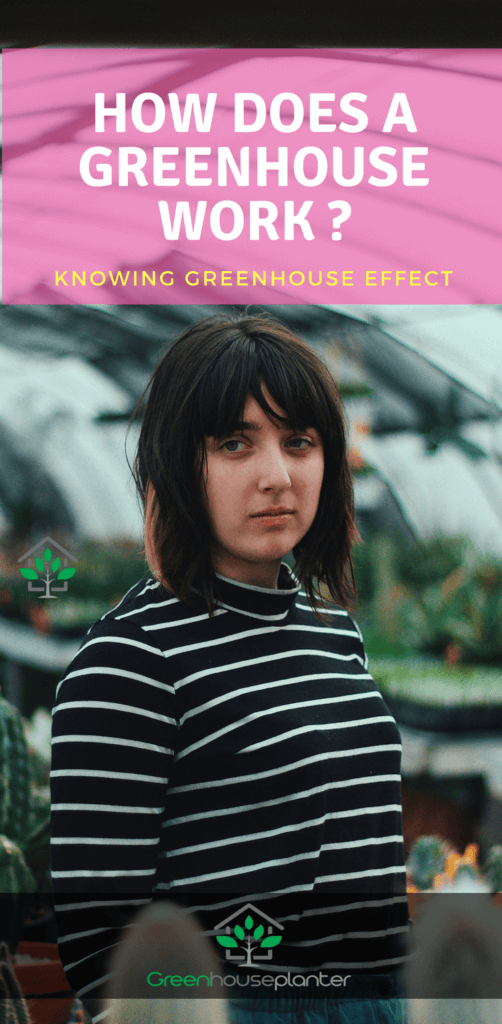![]()
Plant Dreams, Grow Gardens
A greenhouse is a transparent enclosure that is used to create an artificial man-made atmosphere for growing plants, vegetables, fruits, and flowers. A controlled greenhouse works by maintaining the environment inside using artificial grow lights, humidifiers, and heaters. Whereas a simple uncontrolled greenhouse works by passive heating, In passive heating the rays from the sun come to earth and warm the earth’s surface and because the greenhouse is made of glass so radiations from the sun come inside and heat the greenhouse and this heat is not lost into the atmosphere because these rays are trapped by the glass walls and roof of the greenhouse and thus greenhouse remains warm even at night and allow plants and vegetables to grow in warm climate continuously. A greenhouse is an artificial source of life for plants when there is no sunlight or heat for their growth (cold days of winter in Ice-lands and other colder regions of the earth).
Unlock the potential of your garden with GreenhousePlanter – explore our PRODUCTS today!
The atmosphere within a greenhouse is the same as the earth’s atmosphere. The rising amount of heat in the earth’s atmosphere is the result of an increase in greenhouse gases like carbon dioxide, methane, nitrogen oxides, and water vapors. These gases gathered around the earth’s boundary and stop sun rays to go back to space and thus earth’s atmosphere becomes more warm and cozy.
This is exactly the same as greenhouse works, in earth atmosphere greenhouse gases trap the sun radiations and in a greenhouse, the glass roof and walls trap sun radiations and do not allow them to escape out and turn these rays into heat.

Nowadays, the rapid increase in greenhouse gasses from different human resources (automobiles, appliances, burning of fossil fuels, etc.) has a stronger effect on our greenhouse (Earth). Within greenhouse light, heat and growth nutrients are provided to plants for their survival and efficient growth.
A greenhouse is made up of transparent material and also it is built at such a place where it absorbs more sunlight during the day and releases less heat at night. A greenhouse works by trapping the heat inside to make the environment favorable for plant growth.
The warmness of a greenhouse doesn’t depend upon the amount of sunlight, but it depends upon the material by which it is made. If the material is of high density then it absorbs more heat and causes plants to grow faster.
When there is no sun in colder days there is a need to provide artificial heat by a heater or with the help of another source of heat, so that plants can grow. Sometimes artificial heat source is also used to provide heat at night when the no enough heat in the greenhouse.
A greenhouse is specifically used to maintain the optimum temperature for plants in contrast with outdoor harsh temperature. Within the greenhouse when plants heat up they cause humidity and it helps plants to restrain in water.
In a greenhouse, you can grow tomatoes, strawberries, onions, garlic, pepper, corn, carrots, and different types of flowers by providing light, energy, humidity, water, and nutrients in standard amounts. Within a greenhouse it is not necessary to plant the same type of plants or flowers; you can also grow different types by providing them with their necessities.
Owning a greenhouse is a big responsibility, the person should know all the facts about cold season crops or flowers like these crops are cultivated in March and warm-season crops or flowers are cultivated in April or May because these are anti congelation.
Solar heat trapped by greenhouse walls should be equally circulated within the whole room covered by the transparent glass so all the plants inhale sunlight and heat to grow properly. So it is obvious that the greenhouse is used to trap solar radiation and turn these radiations into heat and light for the growth of plants inside it. When owning a greenhouse keep in mind few things to cultivate healthily and growth worthy plants;
Plantation in a greenhouse is beneficial as within it we can plant vegetables and flowers according to our own requirements. In greenhouse plants, inhale carbon dioxide at night but in an outdoor environment at night, sunlight is not present in the atmosphere and thus photosynthesis stops and respiration occurs but in greenhouse plants can carry on photosynthesis even at night using grow lights.
When thinking about a greenhouse building, consider a fertile land free from pests and bacteria. In this way, we can also control the healthy growth of plants only by considering carefully. When plants are grown in a greenhouse there is no fear of bad weather or whatever the season is. A greenhouse is beneficial and widely used for colder regions and in extreme environments where the sun is frequently shined to grow vegetables. In the outer atmosphere, the PH of rain and heavy or slow rainfall also affects the crop’s productivity but in contrast, a greenhouse is varying from all these shortcomings. It protects plants from excess cold and heat of the outer atmosphere.
The use of greenhouse increases in this technological era because the industrial revolution leads to the cutting of forests and deforestation cause an increase in the concentration of carbon dioxide in the atmosphere. No trees absorb carbon dioxide and thus this excessive CO2 disperses in the atmosphere.
This CO2 trap more sun radiations and warm earth’s climate. Deforestation also leads to soil erosion and barren land. No doubt greenhouses have benefits but there is also a need to take some initial right steps. A right or experienced first move can green your house/greenhouse but your inexperienced attitude towards the selection of seeds, fertilizers, pesticides, and land selection, the season of cultivation, and maintenance of optimum temperature may build a greenhouse with no future foundations.
Greenhouse gases (CO2, NO2, water vapors, methane, etc.) which are produced as a result of various human activities, trap some UV radiations coming from the sun and do not allow them to go back to space and cause earth’s atmosphere get warm and cozy day by day.
After CO2 water vapors are also a cause of greenhouse effect like water vapors are present in the atmosphere as a gas and cause fluffy clouds and the white tops of these clouds reflect heat back to the atmosphere and cause the greenhouse effect.
Warmer atmosphere melting of glaciers and Ice lands leads to rising ocean levels and acidity of ocean water. This increased acidity causes infertile and acidic soil and this soil affect the productivity and quality of crops. If we are continuously releasing, this amount of greenhouse gases in the atmosphere then there will be a time when there is no place to establish an artificial greenhouse on earth as well. A greenhouse works on the principle of quality through time management and if our land is used wisely then it yields maximum.
The use of greenhouses is increasing because people becoming more health-conscious and they prefer to cultivate vegetables free from bacteria and pests at home even at a very small scale. A number of greenhouses are built to support food companies and flower dealers who do not compromise on their sales which are affected by seasons if they were relying on natural plant or vegetable cultivation process.
Since the earth’s atmosphere gets warmer the use of greenhouse increases almost in all the countries of the world because it has its own unique and under control closed environment. It allows growing vegetables, fruits, flowers, and transplants out of season, due to a greenhouse the specificity of crops of colder or warmer season almost diminishes.
Now people can avail fruits and vegetables of a warm season in the cold season as well. A poor greenhouse balance of heat, light, water, and nutrients causes a limited growth of plants within it.
